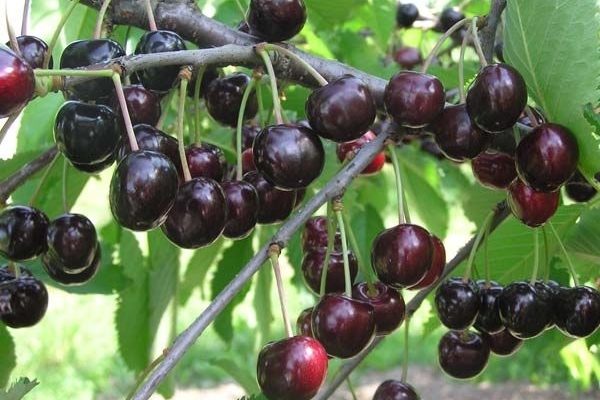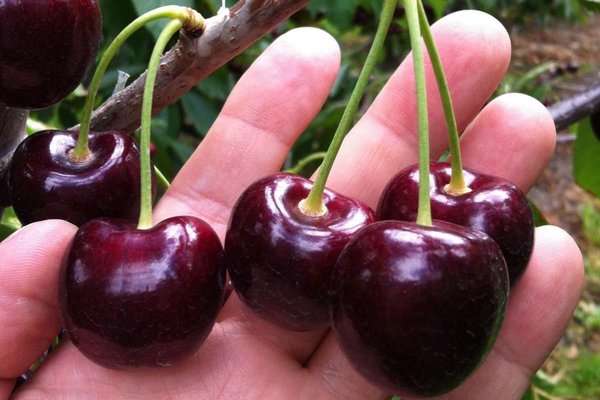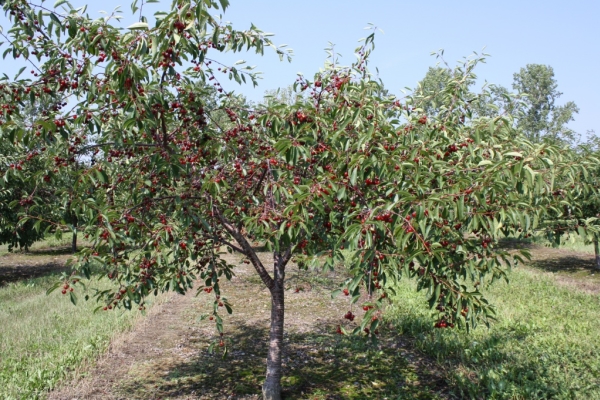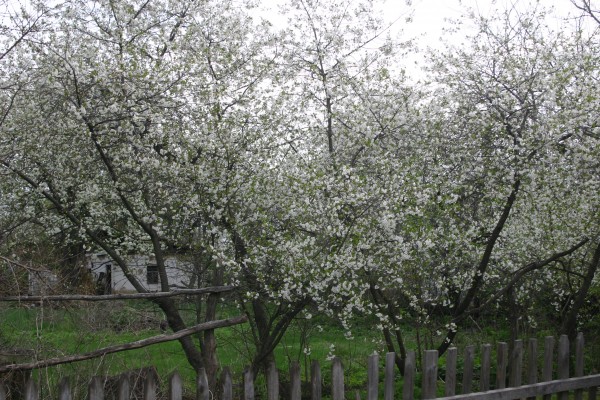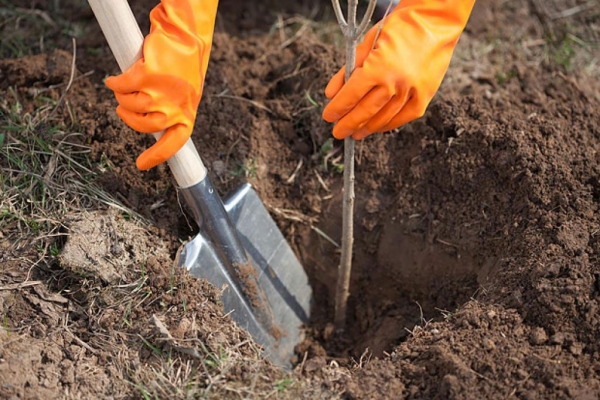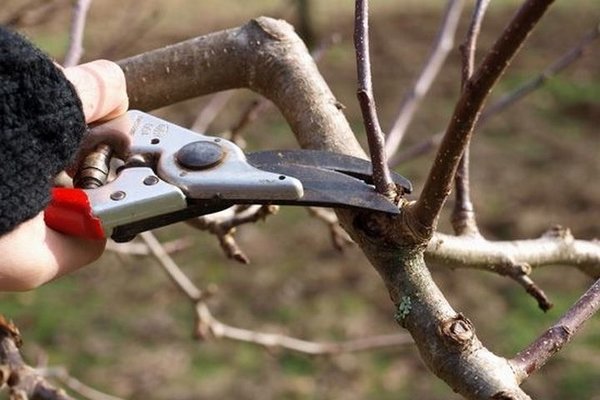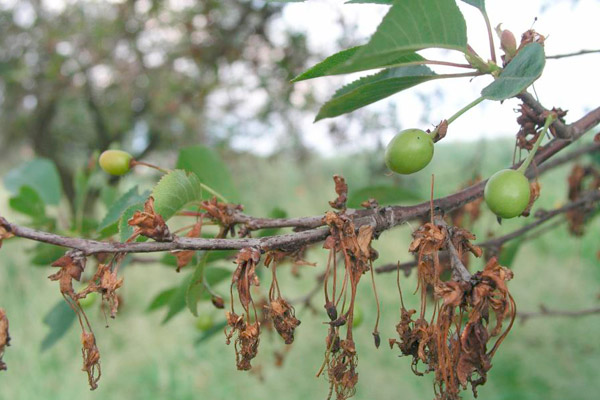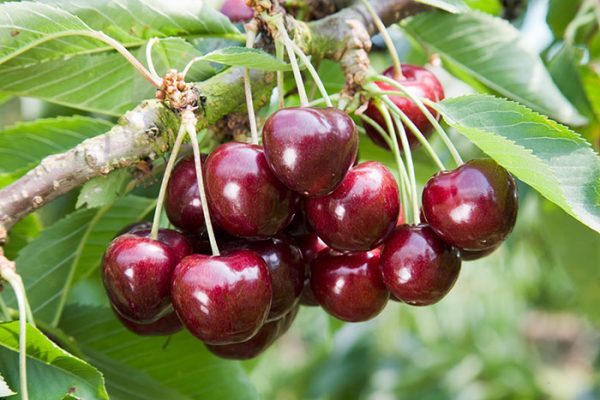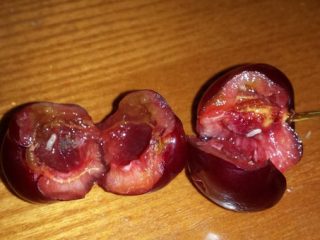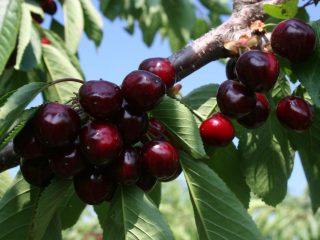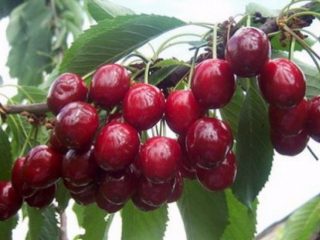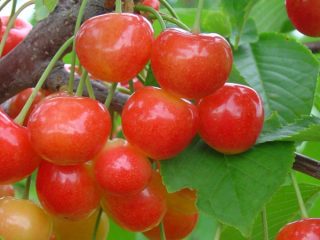Content
Cherries Drozdovskaya is a new promising variety. It is distinguished by good taste of fruits, resistance to frost and diseases. To get a high yield, the crop is provided with care, which consists of watering, fertilizing and pruning.
History of variety selection
Cherry Drozdovskaya is also known as Trosnyanskaya. The variety was bred at VNIISPK by free pollination of the Orlovskaya fairy cherry. Since 2010, the variety has been under state variety testing. Based on its results, a decision will be made to enter the Drozdovskaya variety into the state register.
Description of Drozdovskaya cherries
Cherry Drozdovskaya is a large-fruited variety that ripens in the middle period. The tree has a spreading crown. The height of an adult tree is 3.5 m. The leaves are dark green, obovate, large, with veins.
The flowers are white, bisexual. The buds are collected in umbrellas of several pieces.First, flowers bloom on the branches, after which leaves appear.
Description of the fruits of the Drozdovskaya variety:
- round shape;
- rich, almost black color;
- weight 4.9–5.5 g;
- dense juicy pulp;
- sweet taste.
The sugar content in the pulp is 11.5%. Tasting score – 4.5 points out of 5.
The Drozdovskaya variety is suitable for planting in the southern regions. Due to its high frost resistance, the tree tolerates the conditions of the middle zone well.
Characteristics of the variety
When choosing a cherry variety, its main characteristics are taken into account: resistance to frost and drought, flowering and fruiting periods, yield, advantages and disadvantages.
Drought resistance, frost resistance
The Drozdovskaya variety has average resistance to drought. To obtain a high yield, the crop is provided with watering. Trees need moisture during flowering and fruit ripening.
The variety is highly frost-resistant. Trees tolerate temperatures as low as -36 °C in winter. For additional protection of cherries from frost, covering material is used.
Cherry pollinators
The Drozdovskaya variety is self-sterile. The formation of ovaries occurs in the presence of pollinators that bloom at similar times.
Drozdovskaya cherry blossoms in mid-May, the berries ripen in mid-July. The best pollinators are varieties Regina, Revna, Tyutchevka, Adeline.
Productivity and fruiting
A permanent harvest begins to be harvested 3–4 years after planting. Productivity is about 30 kg per tree. After ripening, the fruits are easily removed from the stalk. At high humidity, cherries begin to crack.
Area of application of berries
The fruits of the Drozdovskaya variety have a universal purpose. They are used fresh or processed into homemade preparations (compotes, preserves, jams).
Resistance to diseases and pests
The Drozdovskaya variety is considered resistant to diseases and pests. To protect the plantings, preventive spraying is carried out and agricultural practices are followed.
Advantages and disadvantages of the variety
Advantages of the Drozdovskaya variety:
- high marketability and taste of fruits;
- resistance to frost and diseases;
- decent yield.
Disadvantages of the Drozdovskaya variety:
- pollinator planting is necessary;
- fruits crack when exposed to high humidity.
Landing Features
Its further growth and fruiting depend on the correct planting of the Drozdovskaya variety. The place for growing cherries is chosen taking into account the composition of the soil and lighting.
Recommended timing
The timing of planting crops depends on the weather conditions of the region. In the southern regions, work is carried out in the fall, after leaf fall. Before the onset of cold weather, the cherries will have time to take root in a new place.
In cool climates, planting is postponed to spring. First, they wait for the snow to melt and the soil to warm up. Cherries are planted before sap flow begins.
Choosing a suitable location
The place for growing Drozdovskaya cherries is chosen taking into account a number of factors:
- constant natural light;
- no moisture stagnation;
- protection of the site from the wind;
- fertile drained soil.
It is recommended to find a place for the seedling on the south or west side of the site. Groundwater should be located at a depth of 2 m or more.
The culture prefers fertile sandy and loamy soils. In sand, clay and peat, cherries develop slowly and may die.
What crops can and cannot be planted nearby?
Cherry does not tolerate the proximity of fruit and berry trees: apple, pear, plum, apricot. The exception is cherries, the closest relative of this crop.It is best to select a specific area and plant several varieties of cherries or cherries on it.
Cherries are removed from birch, linden, oak and other trees by at least 5 m. Otherwise, the plants will begin to compete for nutrients in the soil.
Selection and preparation of planting material
Healthy seedlings of the Drozdovskaya variety at the age of 1 or 2 years are suitable for planting. Plants are assessed visually for the absence of traces of rot, mold and other defects.
During transportation, the roots of the seedling are wrapped in a damp cloth. If the root system is dry, place it in clean water for 3 hours.
Landing algorithm
Sequence of planting work:
- A pit measuring 60x60 cm and 70 cm deep is being prepared on the site.
- Fertile soil is mixed with 10 g of compost, 100 g of potassium sulfate and 200 g of superphosphate are added.
- The soil mixture is poured into the hole and left for 3-4 weeks to shrink.
- After the specified time, soil is poured into the hole, and a seedling of the Drozdovskaya variety is placed on top.
- The roots of the tree are covered with earth and watered abundantly.
If cherries are planted in the spring, then it is better to prepare the hole in the fall. After planting, the tree is watered every week. The soil under the tree is mulched with humus.
Aftercare for cherries
Drozdovskaya cherries are watered 3 times during the season. Precipitation must be taken into account. Watering is especially important if drought occurs during the flowering or fruiting period.
The watering rate is determined taking into account the age of the tree. The older the tree, the more moisture it needs. For annual cherries, 2 liters of water is enough. Every year the volume of moisture increases by 1.5 liters.
Drozdovskaya cherries are fed according to the following scheme:
- at the beginning of May, 20 g of urea, potassium salt and superphosphate are dissolved in 10 liters of water and the tree is watered;
- fertilizing is repeated after harvesting, but urea and other nitrogen fertilizers are excluded;
- in August, 200 g of wood ash is added to the soil.
The crown of the Drozdovskaya cherry tree is formed in several tiers. The first tier consists of shoots located at a distance of 10–20 cm from each other. Subsequent tiers are obtained every 60 cm.
Be sure to trim frozen and damaged branches. In mature trees, shoots that thicken the crown are eliminated.
Preparing cherries for winter includes three stages: abundant watering, mulching the soil and covering with special materials.
The tree is watered abundantly and the trunk is hilled. Compost is poured on top with a layer of 10–15 cm. Agrofibre or burlap is used for covering. To prevent the trunk from being damaged by rodents, it is wrapped with mesh or roofing felt.
Diseases and pests, methods of control and prevention
The most dangerous crop diseases are listed in the table.
Disease | Signs | Struggle | Prevention |
Moniliosis | The shoots become brown and dry out. White growths appear on the fruits. | Spraying trees with Bordeaux mixture. | 1. Whitewashing tree trunks. 2. Loosening the soil near the trunk. 3. Preventive treatment in spring and autumn. |
Rust | Brown or red swellings appear on the leaves. | Spraying shoots with copper oxychloride. |
Dangerous cherry pests are listed in the table.
Pest | Signs | Destruction | Prevention |
Weevil | Yellow-red beetles eat buds, leaves and fruits. | Spraying with “Karate” or “Fastak” preparations. | 1. Digging up the soil in the fall. 2.Regular pruning of shoots. 3. Cleaning up fallen leaves. 4. Removal of dead bark and whitewashing of the trunk. 5. Preventive treatments with insecticides. |
Black aphid | Aphid colonies choose the underside of leaves. As a result, the leaf plate curls up and dries out. | Treating trees with Fitoverm or wood ash infusion. |
Conclusion
Cherry Drozdovskaya is a large-fruited variety that produces a harvest in the medium term. Its features are good presentation and taste of fruits, high yield, resistance to frost and diseases. If the planting and care scheme is followed, the Drozdovskaya variety brings a stable harvest.

